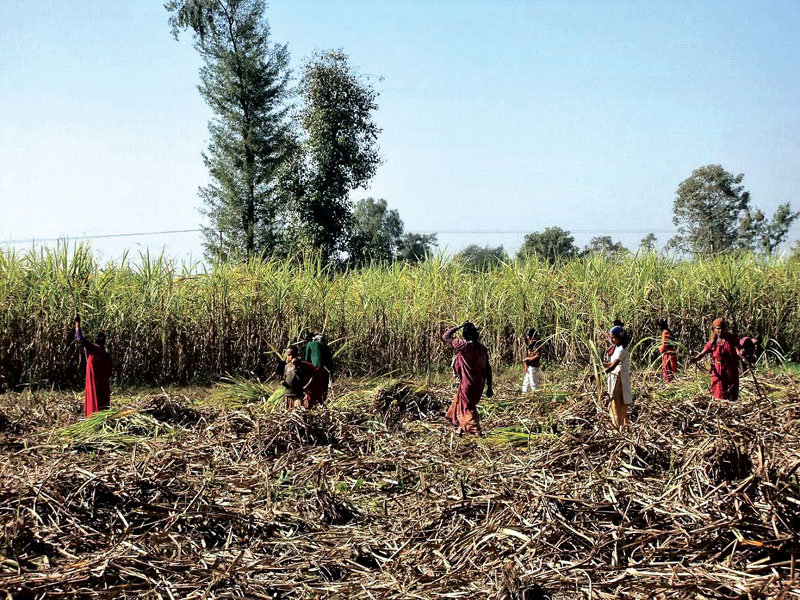Insurance policies on sugarcane, cardamom in offing
- IB mulling over fixing premium at 5pc of sum insured
Kathmandu, August 15
Insurance Board (IB), the insurance sector regulator, will soon introduce insurance policies on sugarcane and cardamom to provide protection to thousands of farmers growing these two cash crops.
“We have already prepared a draft of sugarcane insurance policy and are conducting studies to frame the cardamom insurance policy,” IB Deputy Director Kundan Sapkota told The Himalayan Times. “Once we finalise these products, they can be bought from any non-life insurance firm.”
The IB is mulling over fixing the premium of both these products at five per cent of the sum insured. This means if coverage amount is fixed at, say, Rs 100, then policyholders will have to pay a fee of five rupees per year to purchase these products.
Once the premium amount is paid, losses triggered by fire, lightning, earthquakes, floods, drought, landslide, cyclonic storm, hailstorm, snow, sleet, other disasters, pests and diseases will be fully covered.
“However, these risks will most likely be covered on the basis of input cost,” said Sapkota. In other words, the premium amount will most likely cover costs that have gone into growing these cash crops, not projected yield.
These costs include labour, transportation, irrigation, and farm management costs, and expenses made on buying fertilisers, pesticides and seedlings. Also, amount paid as land and irrigation tax, depreciation cost of agricultural equipment, and cost of repair and maintenance of agricultural equipment will be covered.
“Based on various parameters, policyholders will be able to claim up to 90 per cent of these costs (or sum insured), if crops cannot be harvested,” said Sapkota.
While fixing the sum insured, the IB, which recently introduced insurance policy for banana farmers, is likely to refer to cost at which farmers sell the final product in the market. “But this method may only be pursued in the case of sugarcane insurance,” Sapkota added.
Sugarcane farmers mostly sell their products to sugar factories. Prior to selling these products, farmers and operators of sugar factories fix a price at which sugarcane is sold to sugar manufacturers. Mostly government has to intervene in this process, as farmers do not budge from price they have quoted, while sugar industries seek discounts.
“We are planning to deduct 25 per cent from this purchase price to fix coverage amount in case of first crop — or sugarcane that grew from new seedling. But if sugarcane was produced from stubble of crop that was harvested in the past, 35 per cent would be deducted from the purchase price to fix the coverage amount,” Sapkota said, adding, “We are yet to devise a formula to fix coverage amount for cardamom insurance policy.”






